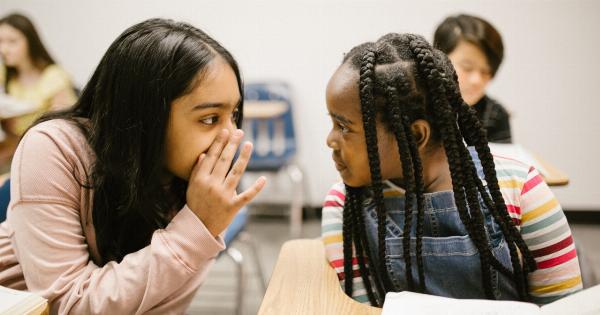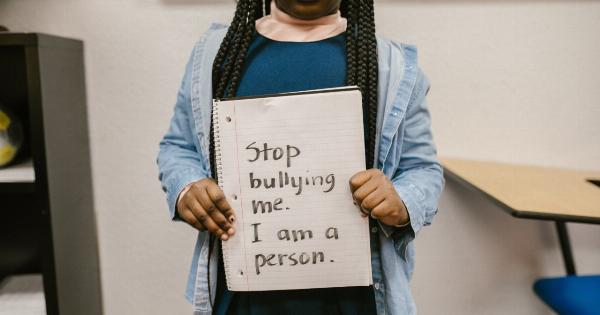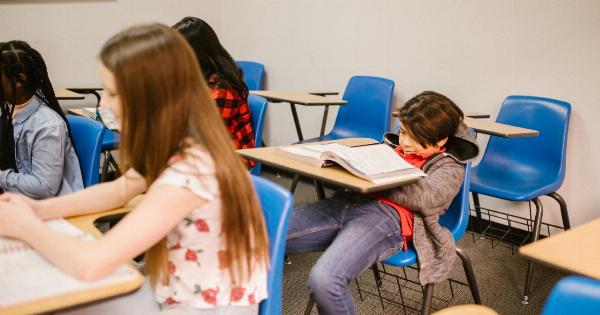Education should be a safe haven for students, a place where they can grow academically, socially, and emotionally.
However, in today’s society, the crisis of bullying is affecting one in three students, making schools a breeding ground for fear, anxiety, and low self-esteem. This alarming statistic demands immediate attention from educators, parents, and policymakers to address the root causes of bullying and create a nurturing environment for every child.
What is Bullying?
Bullying refers to repeated aggressive behavior that is intentionally harmful and involves an imbalance of power. It can manifest in various forms, such as physical, verbal, social, or cyberbullying.
The consequences of bullying can be severe, leaving deep emotional scars and hindering a student’s ability to engage and thrive in an educational setting.
The Scope of the Problem
Research indicates that approximately one in three students is affected by bullying. This staggering figure implies that in a typical classroom of 30 students, ten individuals are enduring bullying in some form.
The widespread nature of this issue contributes to a toxic school culture, impedes learning, and hampers overall student well-being. To dilute the crisis, it is crucial to understand the underlying reasons for bullying.
Root Causes of Bullying
Bullying can stem from a multitude of factors that intertwine in complex ways. Some common root causes include:.
- Imbalance of Power: Bullies often exploit power imbalances, such as physical strength, popularity, or social influence, to exert control over their victims.
- Lack of Empathy: A deficiency in empathy and understanding of others’ emotions can lead individuals to engage in bullying behavior without comprehending the consequences.
- Home Environment: Negative experiences or abusive behavior at home can shape a child’s behavior and attitudes, leading them to replicate aggressive patterns in school settings.
- Peer Pressure: In certain situations, peer pressure can compel individuals to participate in bullying to gain acceptance or avoid becoming targets themselves.
- Societal Influence: Media, entertainment, and societal norms can inadvertently promote aggression and violence, shaping the behavior of young impressionable minds.
Understanding these root causes enables educators and parents to develop effective strategies for prevention and intervention.
Impact on Academic Performance
The effects of bullying on a student’s academic performance are far-reaching and profound. Targeted individuals often experience difficulties concentrating and absorbing information in the classroom.
The constant fear of encountering their tormentors can consume their thoughts and prevent them from engaging fully in educational activities. Consequently, their learning outcomes suffer, leading to a decline in grades and a decreased motivation for academic pursuits.
Bullying also disrupts the learning environment for all students. Witnessing or hearing about instances of bullying creates an atmosphere of apprehension and unease, hindering the positive exchange of ideas and collaboration.
Furthermore, students who bully often exhibit behavioral issues, leading to classroom disruptions that divert teachers’ attention from instruction.
Emotional Consequences
The emotional toll of bullying on students cannot be overstated. Victims of bullying may experience a range of negative emotions, including anxiety, depression, and low self-esteem.
The verbal or physical abuse they endure chips away at their self-confidence, leaving long-lasting scars that affect their overall well-being.
Bullying can also lead to an array of mental health issues. Many victims experience increased levels of stress, which can manifest in physical symptoms such as headaches, stomachaches, and sleep disturbances.
Moreover, the trauma of bullying can contribute to the development of anxiety disorders and even suicidal ideation in severe cases.
Creating a Safe and Supportive Environment
Addressing the crisis of bullying in education requires a comprehensive and multi-faceted approach. Schools must prioritize the emotional well-being of their students and promote a culture of respect, empathy, and inclusivity.
Here are some strategies that can help create a safe and supportive environment:.
-
Implement Anti-Bullying Policies
Schools should establish clear and enforceable policies that explicitly address bullying. These policies should outline appropriate consequences for bullying behavior and provide support services for both victims and perpetrators.
-
Education and Awareness
Engaging students, educators, and parents in comprehensive anti-bullying programs can increase awareness about the issue and foster empathy.
Through workshops, seminars, and awareness campaigns, students can gain a better understanding of the impact of their actions and learn to stand up against bullying.
-
Supportive Counseling Services
Establishing counseling services within schools can provide a safe space for victims to express their emotions and seek guidance.
Counseling also plays a crucial role in rehabilitating students who engage in bullying behavior, aiming to address the root causes behind their actions.
-
Encouraging Peer Support
Developing peer support programs, such as mentorship initiatives or buddy systems, can help create a sense of belonging and reduce instances of bullying.
Older students can serve as role models and provide support to younger peers, fostering a positive and inclusive school culture.
-
Parental Involvement
Engaging parents in the fight against bullying is vital. Schools should encourage open lines of communication between parents, teachers, and administrators to address bullying incidents promptly.
Parent education programs can also provide valuable resources and strategies to prevent and respond to bullying behavior.
The Role of Policies and Legislation
To combat the crisis of bullying effectively, strong policies and legislation are necessary at both the state and federal levels.
These policies should outline the responsibilities of schools, establish reporting mechanisms, and provide funding for prevention programs and resources. Additionally, laws should ensure that victims of bullying receive adequate support and that disciplinary actions are taken against perpetrators.
Conclusion
The crisis of bullying in education is a significant issue affecting one in three students. Its detrimental effects on academic performance, emotional well-being, and overall school culture demand urgent attention from all stakeholders.
By addressing the root causes of bullying, implementing preventative measures, and enacting strong policies, we can create an educational environment that nurtures the growth and development of every child, free from the fear and torment of bullying.































